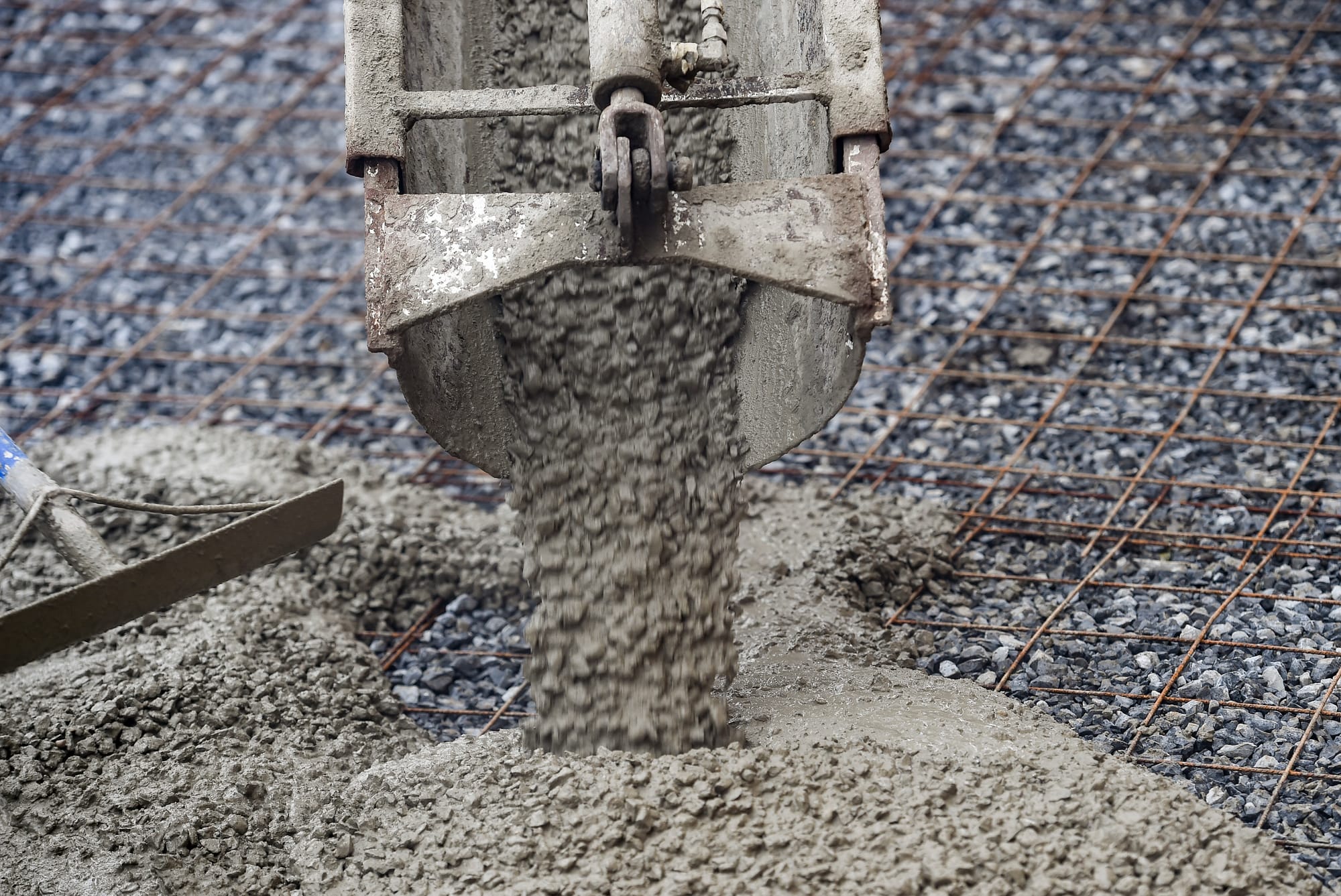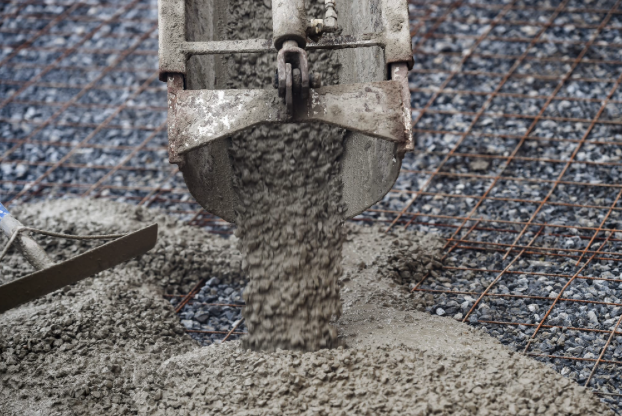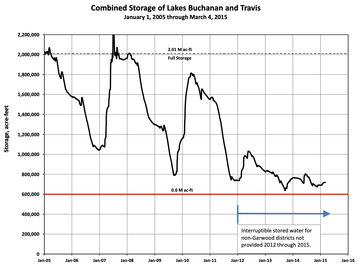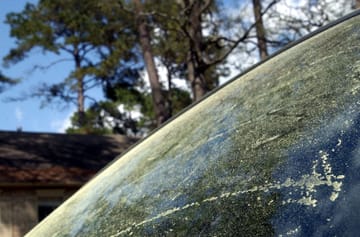☀️ Heya, Austin.
Our city is still a building boom town, and that means lots of concrete. At least one company in the area is trying to make the business a little greener.
Plus, it's City Council week, which means we've got an agenda preview. And, peep five things to know about a local toll road becoming a “smart highway.”
Let's talk about concrete, baby

You probably don’t think about concrete much. But it is everywhere, and it’s quickly expanding into any place it isn’t already. You could say humanity’s a little obsessed with it right now. And it's responsible for 8% of the world’s carbon emissions.
That fact is part of the reason Austin announced last year a plan to use low-carbon concrete in all city construction projects (although it’s hit a few more bumps in the road than is ideal for any layer of concrete).
More and more producers in Texas are working toward developing cement solutions that drive down carbon emissions, said Andrew Pinkerton, executive director of the Cement Council of Texas.
Plus, you know that big I-35 project? One manufacturer, who is hoping to lead the way in lower-carbon cement production, will have its product used in a portion of that project.
But first, let’s get a better understanding of how concrete is made and how that’s changing.
Start with the basics
Traditional cement, known as Portland cement, often follows these four steps in the manufacturing process:
- Step 1: Mined limestone or clay is crushed.
- Step 2: The crushed rock is combined with other ingredients, such as iron ore or fly ash, and then, it's ground some more — this can either be done as a dry process or with water.
- Step 3: The mixture is heated in a kiln where certain elements are burned off, while the remaining elements combine to form small grey balls, known as clinker.
- Step 4: After the clinker cools, it is ground and mixed with small amounts of gypsum and limestone.
The resulting cement is then mixed with an aggregate — usually a mix of stone and sand — and water to form concrete.
Enter, Eco Material Technologies: A different kind of cement
Eco Material isn’t exactly doing anything new. They began developing their cement replacement — known as PozzoSlag — after purchasing a cement manufacturing plant in Jewett in 2011, but the methodology dates back to the Romans.
“What we did with our green cement technology was develop a process that mimics what the Greeks and Romans did. The only difference is that modern day cement is manufactured so that it sets up quickly,” said Danny Gray, the Executive Vice President of Strategy & Business Operations.
Gray broke down their process for me:
The Jewett manufacturing plant is near a coal power plant that produces fly ash as a byproduct. Eco Material is able to bypass the first three steps in producing Portland cement by picking up the fly ash before it is disposed of.
Using fly ash to replace cement in concrete isn't new, but how Eco Material processes it, is. Typically, fly ash is only used to replace 15 to 30 percent of Portland cement. But Eco Material has created a patented mill that further grinds the fly ash with some additives to create a product that can replace traditional Portland cement by up to 50% or more in most construction projects.
Where’s the benefit?
PozzoSlag is able to bypass the mining, crushing and heating process of traditional Portland cement, meaning it is both less expensive to manufacture, Gray said, and avoids the carbon emissions associated with each of those energy-intensive processes.
What happens to PozzoSlag as coal plants close?
The future of coal plants is rocky at best, as closures increase and the U.S. committed last year to phasing out the plants that still remain. Closer to home, Mayor Kirk Watson and the city have been pushing Austin Energy to shutter its portion of the Fayette plant. (Go deeper: read what we wrote about it in March.)
So what would happen to PozzoSlag if those plants do close? Business wouldn't be over, Gray said. They've developed a process for harvesting fly ash from landfills and other deposits, giving them access to a product that will outlast the coal power plant industry.
"It's a win-win-win," said Gray, "because you're not only producing a cement that's lower carbon, but you're also cleaning up or mining out the landfills that are out there and using those as a resource recovery, which ends up bringing economic benefits to the general economy."
So what is Eco Material doing in Austin?
Eco Material was selected as one of the cement suppliers for the I-35 Capital Express North project, which will add a high-occupancy vehicle lane in each direction along I-35 from SH 45 to U.S. 290, among other additions.
The $606 million project is funded by TxDOT, but Eco Material was chosen by the contractor Pulice Construction. Their PozzoSlag cement will be used in the portion of I-35 between SH 45 and FM 1825, just south of Round Rock.
Eco Material has also worked with five other companies on various Austin-area projects, including producing the material used to build 3D printed houses by Hive3D.
Alright, cement class is over. Please enjoy impressing all your friends and family with your newfound cement knowledge next time you’re stuck in traffic driving north on I-35.
— Cat DeLaura, Reporter

Temperature: 80 degrees | Sun: Slay all day | What to Expect: Near perfect weather
Who can be in a midweek slump when you have crystal blue skies and warm temperatures across Austin? The wind will be a little gusty out of the northwest and may put a new layer of pollen on your freshly-washed car.
Mary’s Tip: The 96th ABC Kite Festival at Zilker Park is two weeks away. So get practicing and go fly those kites. 🪁

City Council this week: A new city manager and a new name for a Barton landmark
It’s City Council week again already. The biggest talking point ahead of this week’s meeting has been the council’s plans to hire former Dallas City Manager T.C. Broadnax as Austin’s newest city manager. But here are four other things the council will consider on Thursday.
- No more parking in bike lanes. The city means it. Ever wish you could do something about people parking in bike lanes? That wish might come true. While parking in a bike lane is already illegal where marked by no-parking signage, this resolution would prohibit it by default. The city is also considering a program where volunteers could be trained to issue citations and warnings for illegally parked motor vehicles to increase enforcement.
- Reducing energy use. The City will consider including its eligible buildings in the Austin Energy Commercial Demand Response Program by the end of the year. The program is basically the city’s version of ERCOT sending out those “please conserve energy” alerts when the grid gets tight. Only these alerts go to specific participating businesses, who can earn $50-80 per average kilowatt saved during the events.
- Community Land Trusts: A long-term affordable housing solution? Another resolution Thursday would direct the city manager to identify possible land buys that would allow the development of long-term affordable home ownership and rental through community land trusts across the city. How does it work? Check out this New York Times article that explores everything from the history to current uses of community land trusts.
- New name for the Barton Springs Pool Bathhouse. The new name would be the “Joan Means Khabele Bathhouse.” Why Khabele? Khabele, who grew up in Austin during the 1950s, was one of the first Black students to enroll at Austin High School and participated in numerous “swim-ins” at the Barton Springs Pool when it was segregated. Khabele went on to earn degrees from the University of Chicago and UCLA, work in the Peace Corps and teach in several African countries before returning to Austin.
5 things to know about the 130 toll road becoming a “smart highway”
First, 10 million-square-foot Tesla factories that spit out snazzy electric cars, and now smart technology that tracks traffic. The toll road that snakes along the east side of our city is quickly becoming a high-tech corridor.
Bloomberg recently wrote about how TxDOT is teaming up with a company that’ll install sensors along 130 to A) deliver data to road operators so the freeway runs more smoothly and B) eventually communicate with autonomous vehicles that drive on it.
The goal? A self-driving future. Cue the Space Odyssey theme song.
Here are the fast facts, according to Bloomberg:
🚗 In a $1.4 million contract, TxDOT is partnering with Cavnue, a 4-year-old firm owned by Google parent company Alphabet.
🚗 Cavnue’s pilot system will be set up along the stretch of 130 that runs from North Austin to Georgetown.
🚗 Sensors every 200 to 400 meters along 130 will collect data on traffic, weather and road conditions.
🚗 But the end goal is for this smart infrastructure to eventually allow Cavnue's future autonomous trucking companies to “talk” to its automated fleets and help them navigate 130.
🚗 Texas is AV friendly, thanks to a 2017 law saying it won’t regulate them.
So when will the sensors be installed? Starting this autumn, Casey Hudson, head of comms over at Cavnue, told us.

It Takes Two
Today's clue is for 2 down: You're in a bad one when you get stuck in I-35 traffic.


We’re so glad you found us. Find our bios and contact info here, or reach out at hello@austindaily.com. Behind today’s send: Katie Canales, Cat DeLaura and Mary Wasson.


